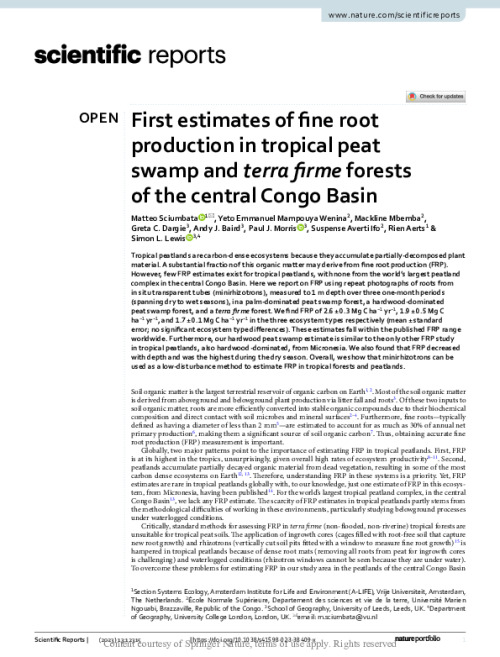First estimates of fine root production in tropical peat swamp and terra firme forests of the central Congo Basin
Publication date
Source/ Author
Region
Language
Tropical peatlands are carbon-dense ecosystems because they accumulate partially-decomposed plant material. A substantial fraction of this organic matter may derive from fine root production (FRP). However, few FRP estimates exist for tropical peatlands, with none from the world’s largest peatland complex in the central Congo Basin. Here we report on FRP using repeat photographs of roots from in situ transparent tubes (minirhizotrons), measured to 1 m depth over three one-month periods(spanning dry to wet seasons), in a palm-dominated peat swamp forest, a hardwood-dominated peat swamp forest, and a terra firme forest. We find FRP of 2.6 ± 0.3 Mg C ha −1 yr−1 , 1.9 ± 0.5 Mg C ha−1 yr−1 , and 1.7 ± 0.1 Mg C ha −1 yr−1 in the three ecosystem types respectively (mean ± standard error; no significant ecosystem type differences). These estimates fall within the published FRP range worldwide. Furthermore, our hardwood peat swamp estimate is similar to the only other FRP study in tropical peatlands, also hardwood-dominated, from Micronesia. We also found that FRP decreased with depth and was the highest during the dry season. Overall, we show that minirhizotrons can be used as a low-disturbance method to estimate FRP in tropical forests and peatlands.
